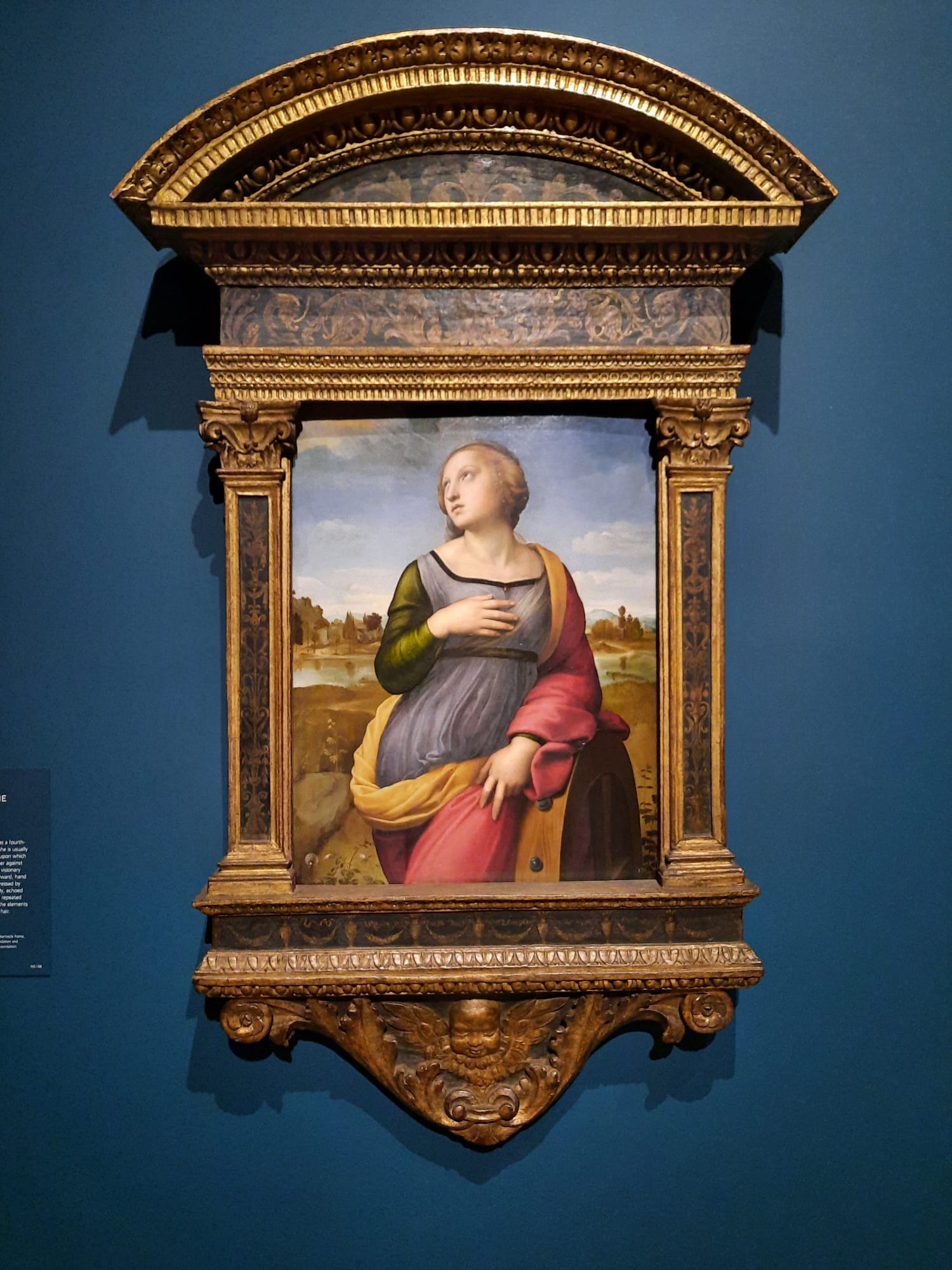Raphael – National Gallery, London
A review of Raphael at the National Gallery. A blockbuster exhibition highlighting the range of this Renaissance master.
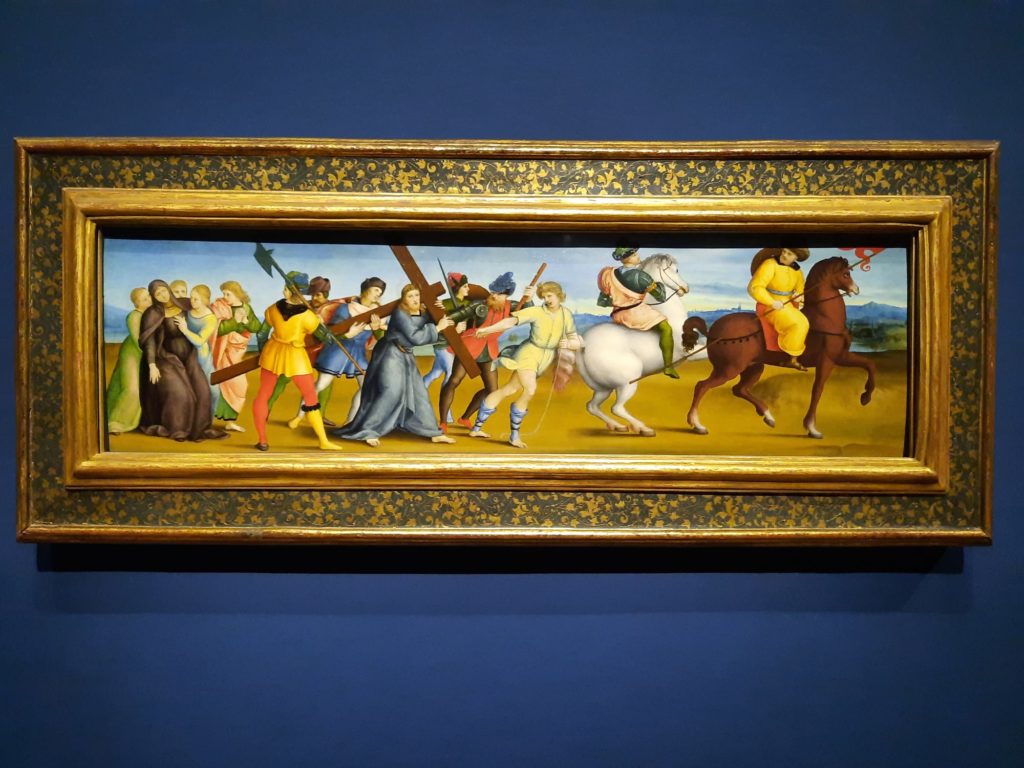
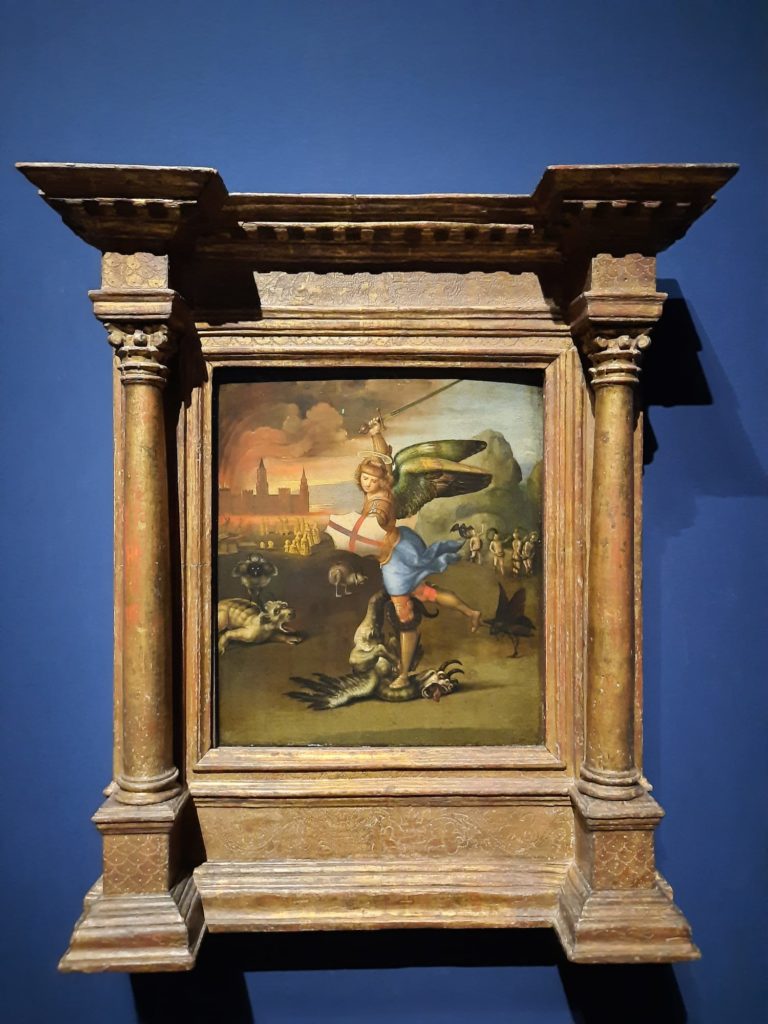
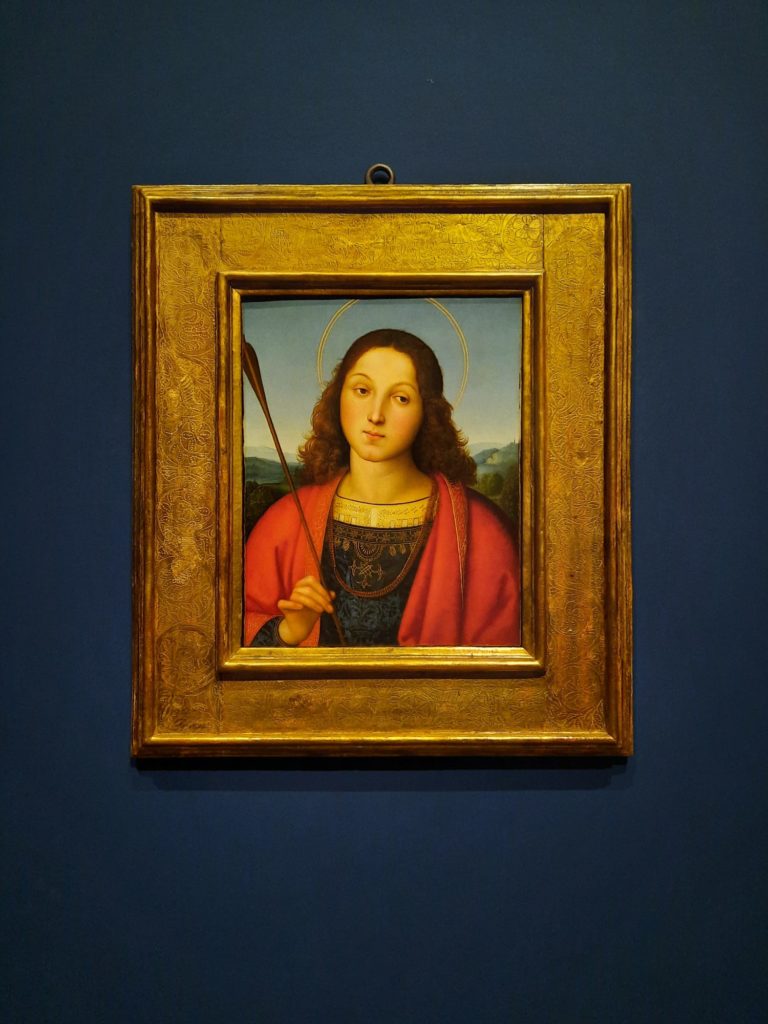
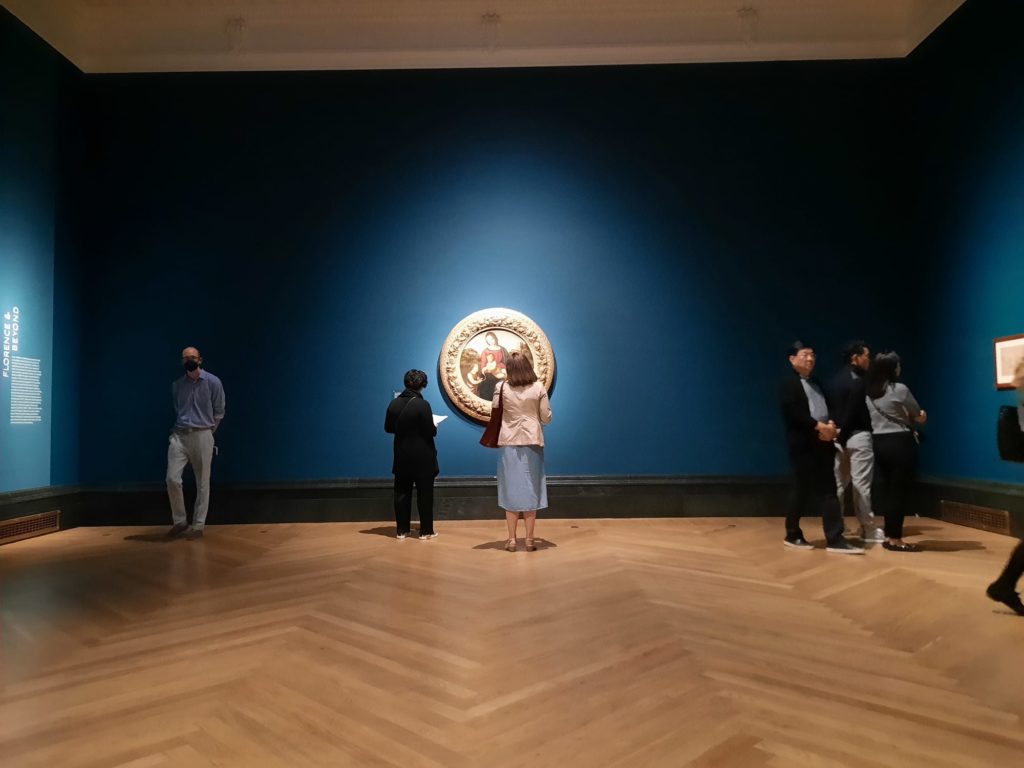
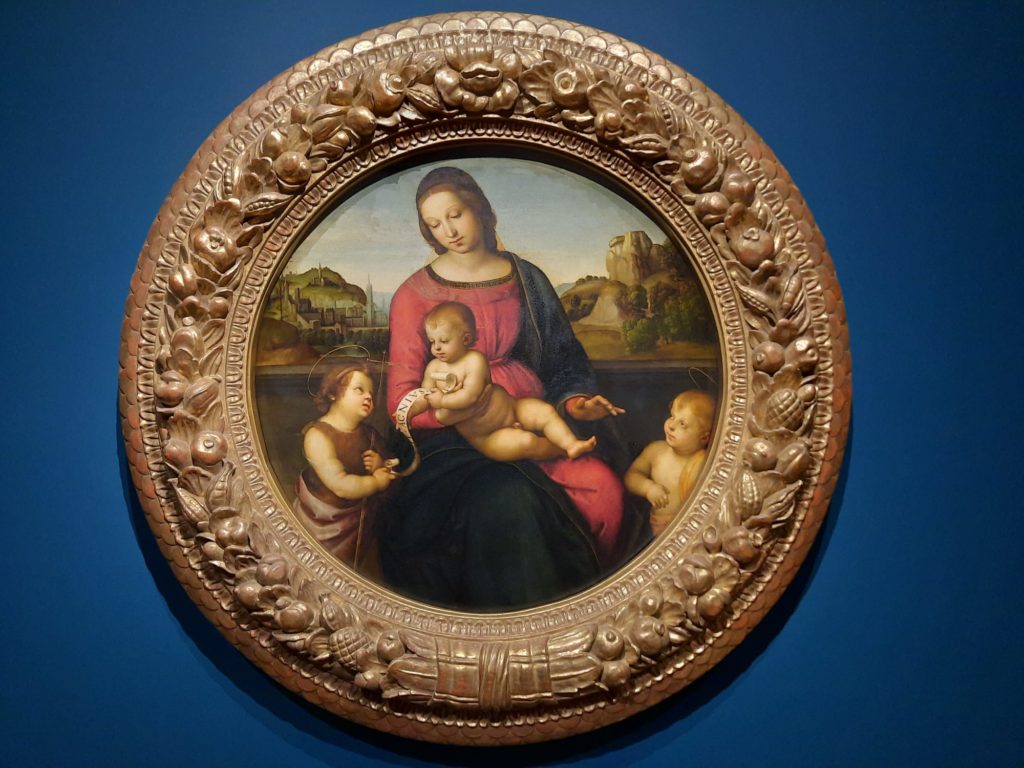
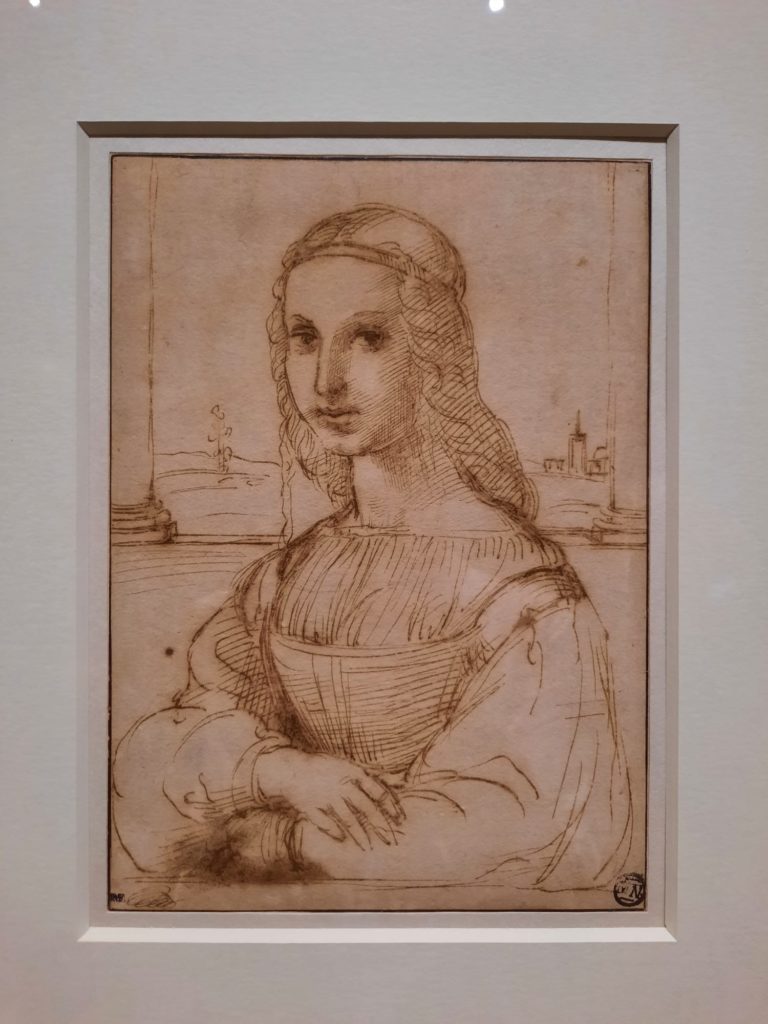
Raphael
What did I know of Raphael before seeing this exhibition at the National Gallery? Reasonably little. I knew him as a real Renaissance man, had seen his frescoes in the Vatican. I had an idea that he was quite a charmer. But until seeing this blockbuster exhibition at the National Gallery, there was a lot I didn’t know. The tranquil beauty of all those Madonnas. His dabbling in proto-archaeology as well as architecture. His ability to spot and seize an opportunity.
The National Gallery is very good at this type of exhibition. Its pull is such that it is able to bring together a ‘best of the best’ of works by its chosen artist. Here we see works from collections in the UK, Italy, France, Germany, Sweden, the US, Austria, Spain, and private collections including the Queen’s. The presentation of the works is also typically beautiful in National Gallery exhibitions. It seems like a small thing, but whoever chooses the wall colours for their exhibitions is great at their job. They always set the scene and create an atmosphere which, along with excellent lighting, offsets the artworks perfectly. For Raphael we have a selection of warm blues with a few rooms in accent colours. It’s as intimate and tranquil as a Raphael Madonna.
And perhaps the best thing, at least as far as I was concerned, was that I was able to remain tranquil while viewing the exhibition. Long-time readers have heard me complain before about the overselling of tickets (in my opinion) to National Gallery exhibitions. It leads to a rather crowded experience, felt by me most acutely in Artemisia. I don’t know if the numbers in Raphael were self-regulated or gallery-regulated, but they were much more comfortable. There was only one bottleneck, in a small room with videos of Raphael’s architectural projects. Otherwise it was blissfully calm and pleasant.
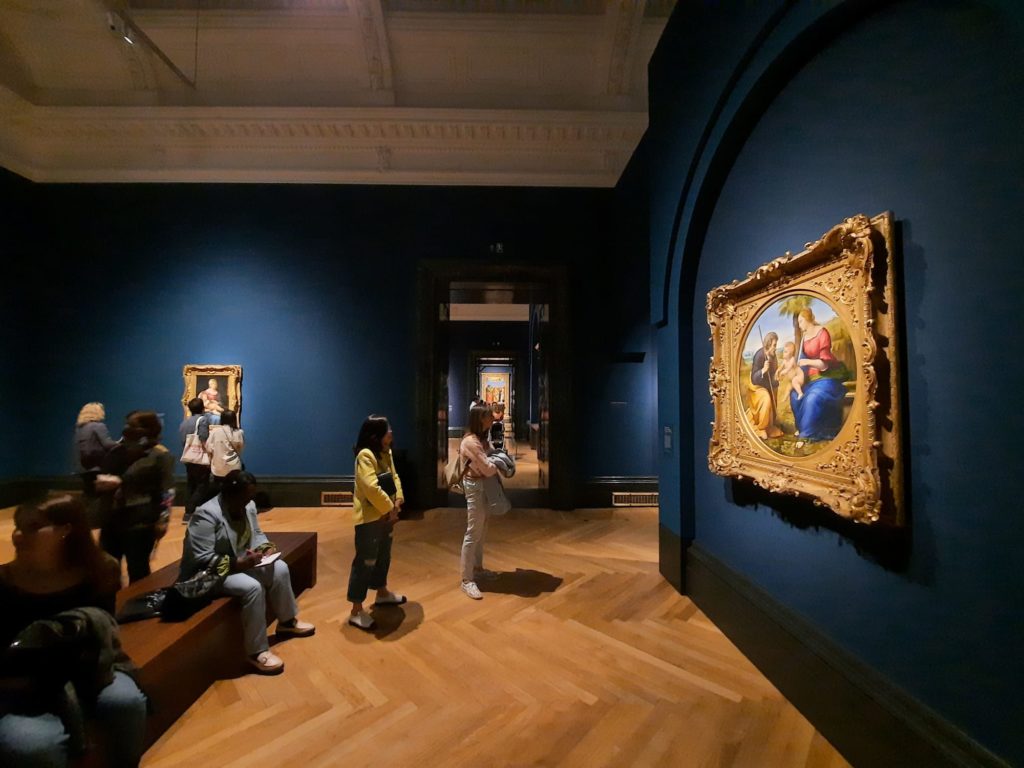
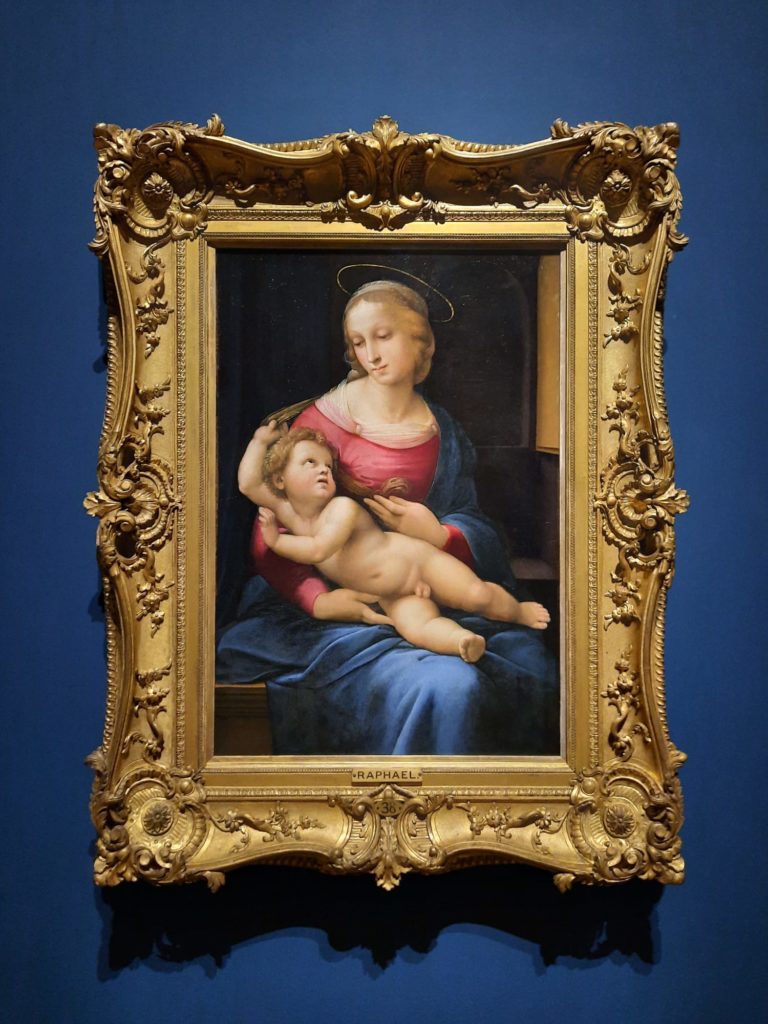
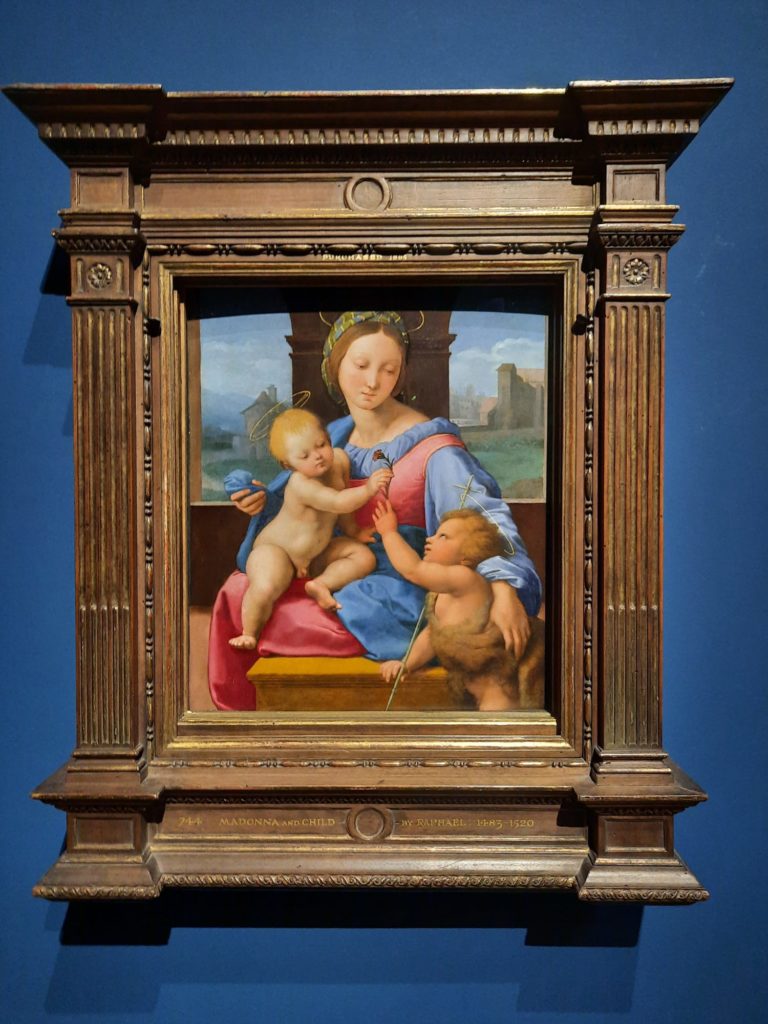
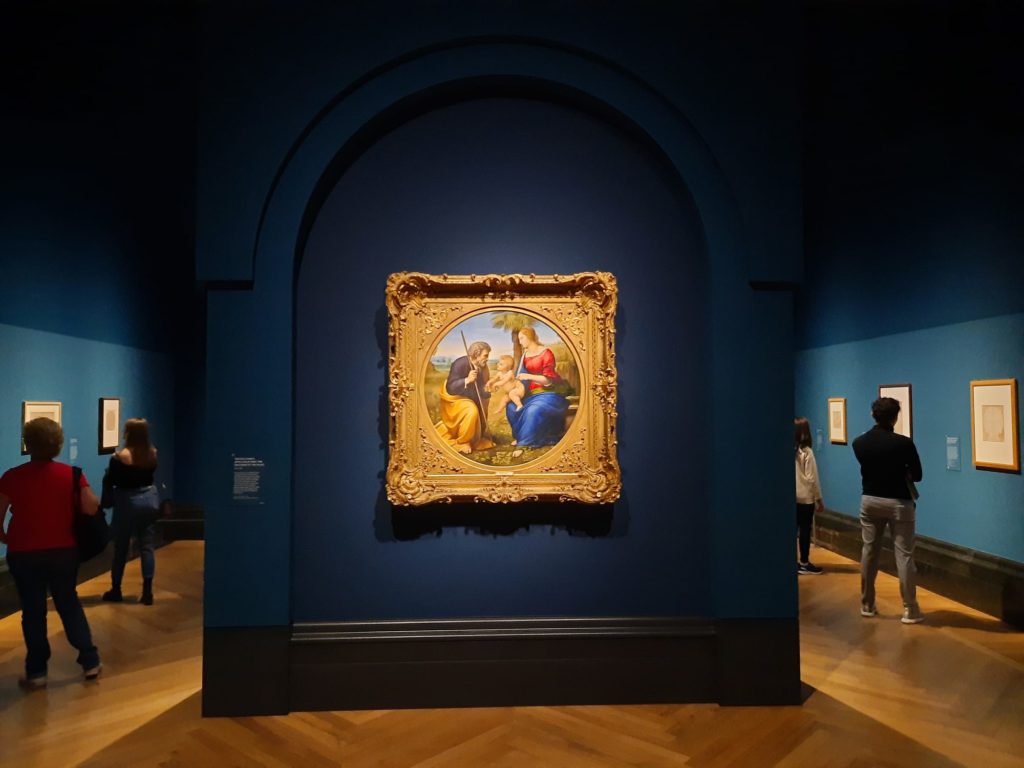
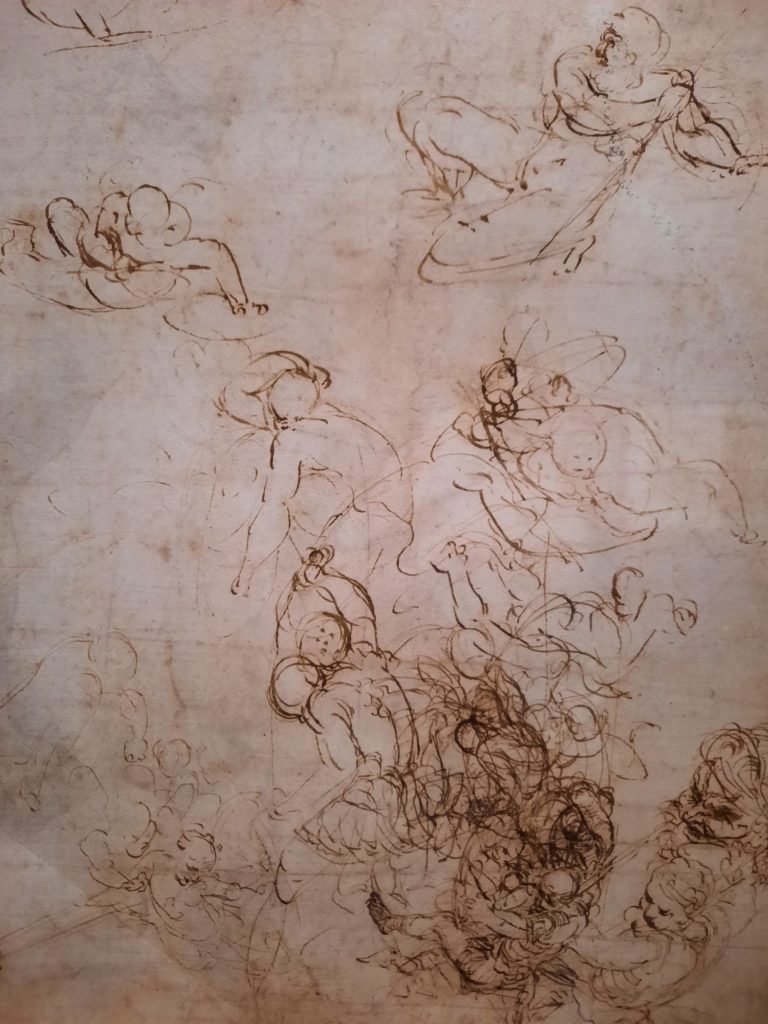
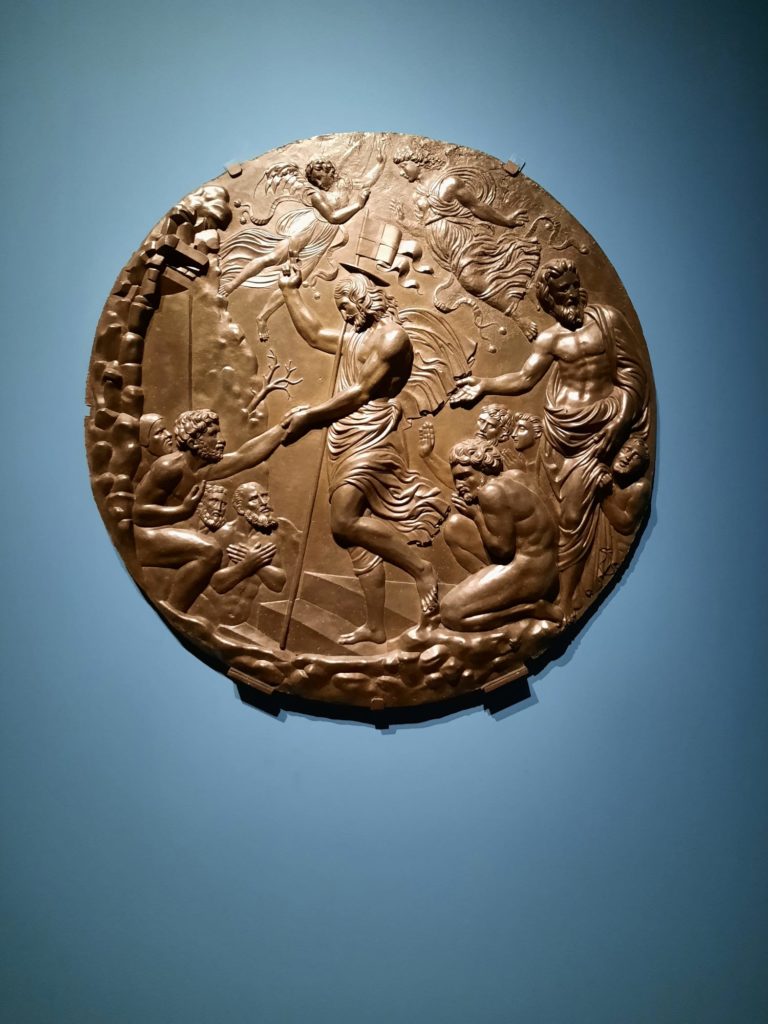
What About The Art?
Ok fine, enough about exhibition logistics then (even if it’s a favourite topic of mine). What about the art that’s on view? Well the presentation is largely chronological. We start with Raphael as a youth. Orphaned at the age of 11 and raised by an uncle, Raphael was a prodigy from an early age. And once he really got started as an artist, he displayed a real talent for learning from the masters (all the other Ninja Turtles plus Perugino), either directly or indirectly, taking on board the best of their styles, but without losing his own artistic vision.
When we come to Raphael’s mature works, the hang becomes partly thematic. There is a grouping of the Madonnas for which he is famous. The same subject over and over, and painted in basically the same colour palette, risks being a bit boring. It’s not. Raphael focuses in on the tender relationship between mother and child. Despite all the foreshadowing of pain to come, his Virgin Marys and infant Christs are wonderfully human. Seeing the range of positions and compositions that Raphael came up with for the same subject matter is also a nice comparison.
Moving through the exhibition, we see Raphael’s other interests, and his skill as a businessman. We see architectural sketches, works painted for popes, and for rich private clients. Raphael had a real ability to make space for himself – more than once he would be invited to take on a part of a larger commission, and take over the whole project instead. We thus see bronzes and sketches for complicated design schemes. Combined with his understanding of the power of prints to disseminate his work, it points to a man who was ambitious, hardworking, and able to make his way in the world. No starving artist in a garret here. One wonders what would have been if he hadn’t died young, at the age of 37 on Good Friday, much lamented by the good people of Rome.
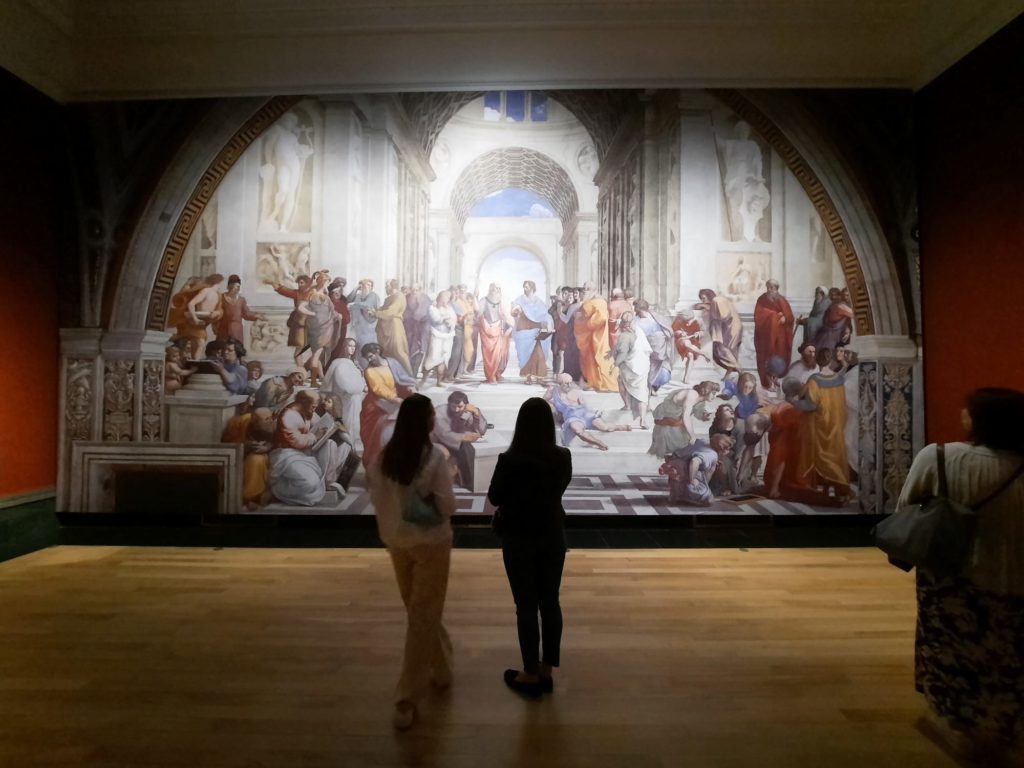
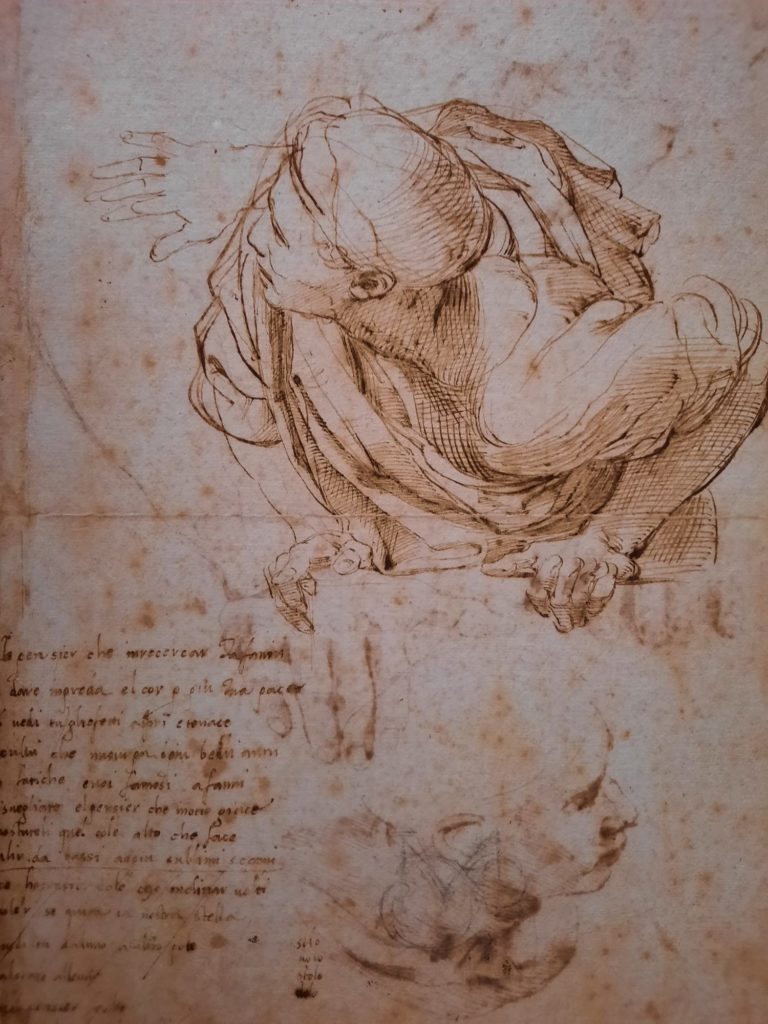
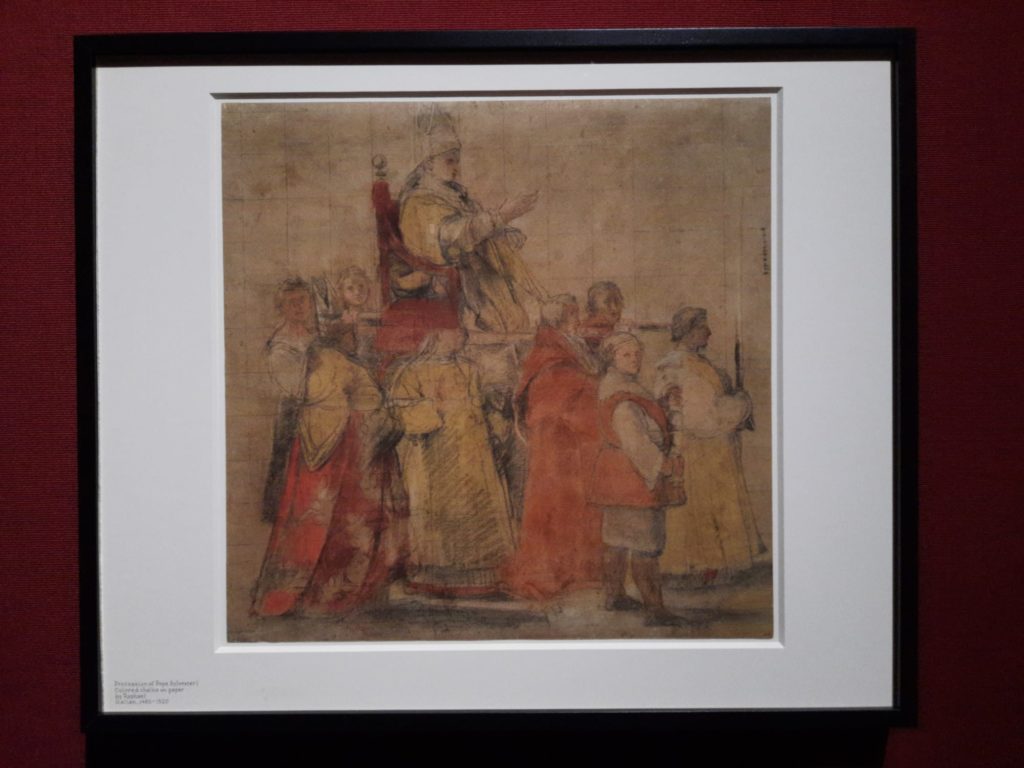
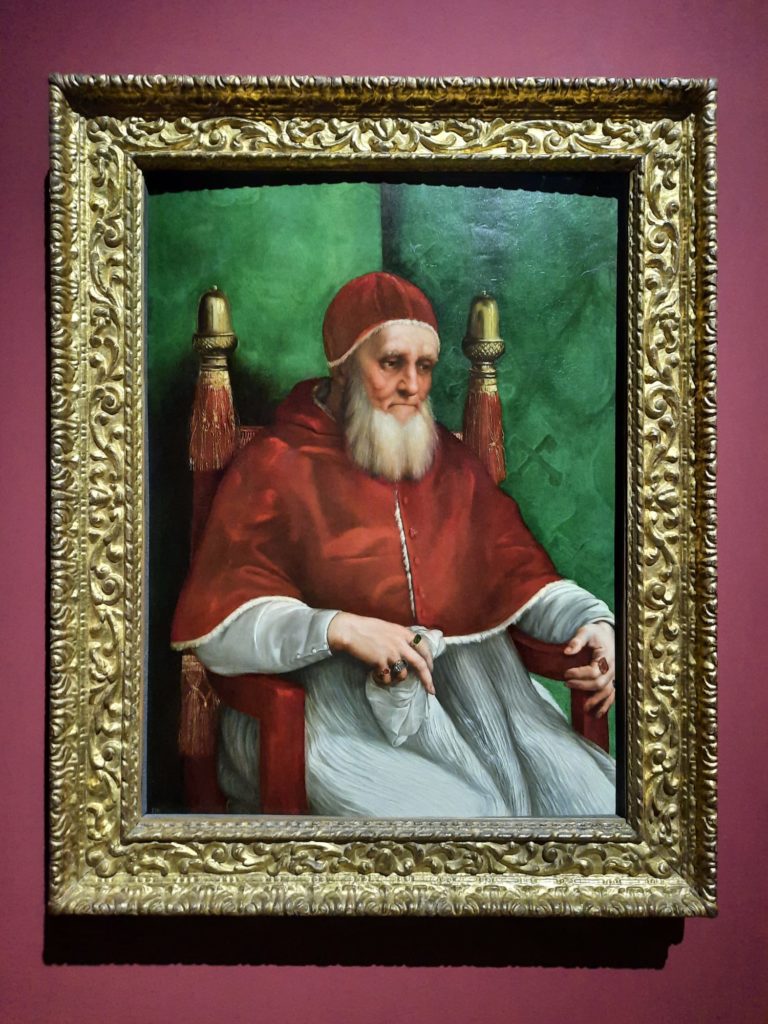
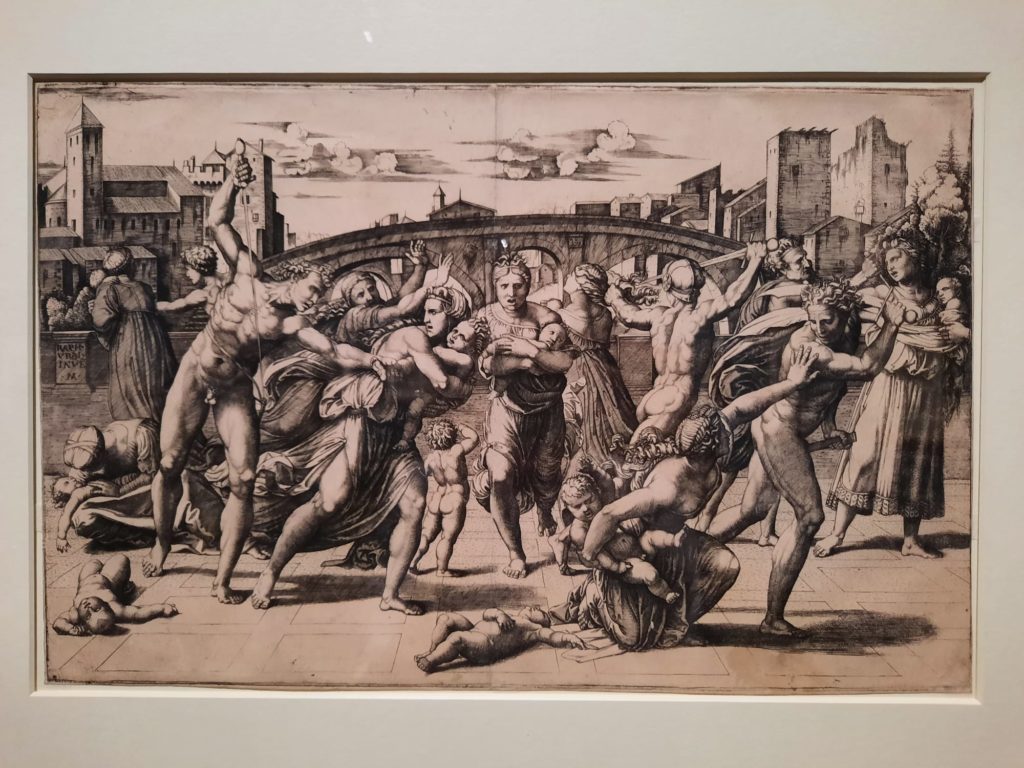
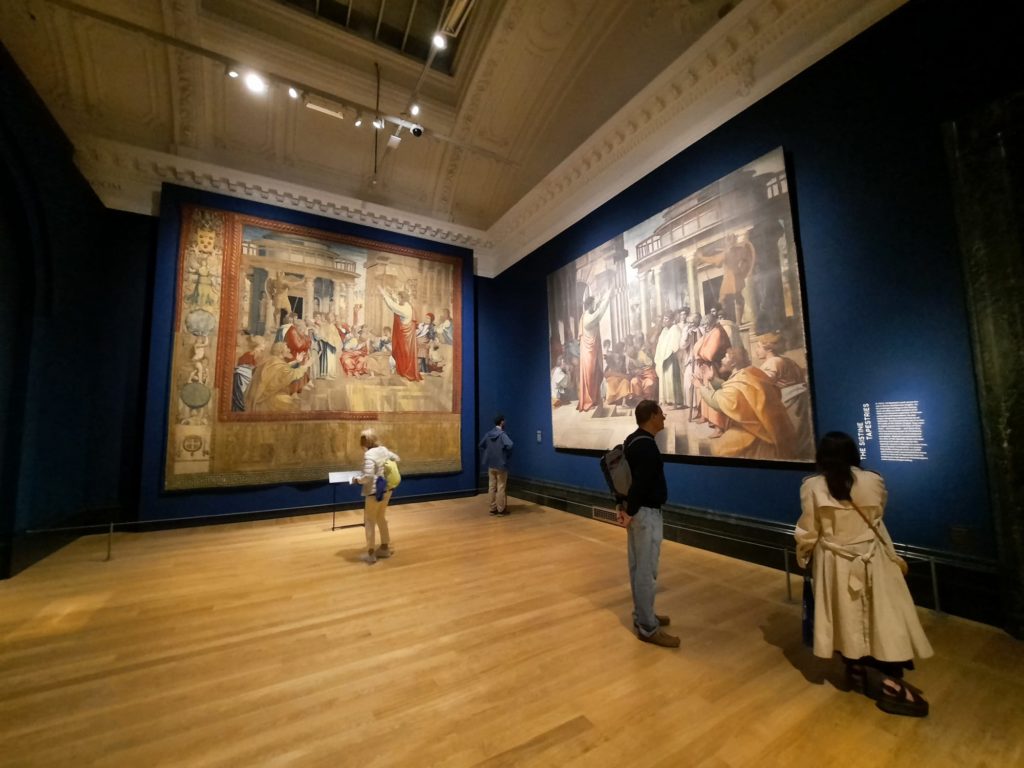
Final Thoughts on Raphael
As an aside relative to that last point, this business acumen was a theme also drawn out in Artemisia and the last big show I saw at the National Gallery on Albrecht Dürer. Perhaps there is a focus amongst their curators on bringing us back down to reality, from divinely-inspired artistic geniuses to savvy pragmatists who knew the value of good PR even if they didn’t have a term for it yet.
In any event, this really is a very good exhibition. The range of works, the sensible groupings, the beautiful way they are displayed. It all shows Raphael in the best light, as the talented synthesiser of the best of all the Renaissance geniuses; genius in his own right and well-liked besides. The first biography of Raphael was almost a hagiography. Reading between the lines, Giorgio Vasari did allude to Raphael having shagged himself to death, but otherwise Raphael could do no wrong. This exhibition is much more insightful. For me it’s all about the insights into the man – Raphael and his buddy writing a letter to the pope about the importance of protecting Roman sites, for instance. It’s this kind of detail which gives me new insights into his work.
And a final point before I finish up on the creative solutions applied by the National Gallery to display a good cross-section of Raphael’s work. It’s not possible to show all the greatest hits in person. It’s particularly tricky for someone who painted a lot of frescoes, which of course are (mostly) stuck to buildings. The School of Athens from the Vatican thus can’t travel to London, but the National Gallery have a life-sized replica. It’s not quite the same, but gives a good impression of the work. It’s certainly better than just having some sketches or a smaller reproduction would be.
More interesting to me was a cartoon for Saint Paul Preaching at Athens. The original was made of over 200 sheets stitched together, and what remains (which is at the V&A) is too fragile to travel. The Factum Foundation for Digital Technology in Conservation have thus created a 3D replica of the cartoon, made by Raphael for weavers to work from. It was only when I read the label that I realised it wasn’t the real thing. It’s an interesting solution which has applications for works which can’t travel for various reasons. Read more about the project here.
Salterton Arts Review’s rating: 4/5
Raphael on until 31 July 2022
If you see this after your page is loaded completely, leafletJS files are missing.

